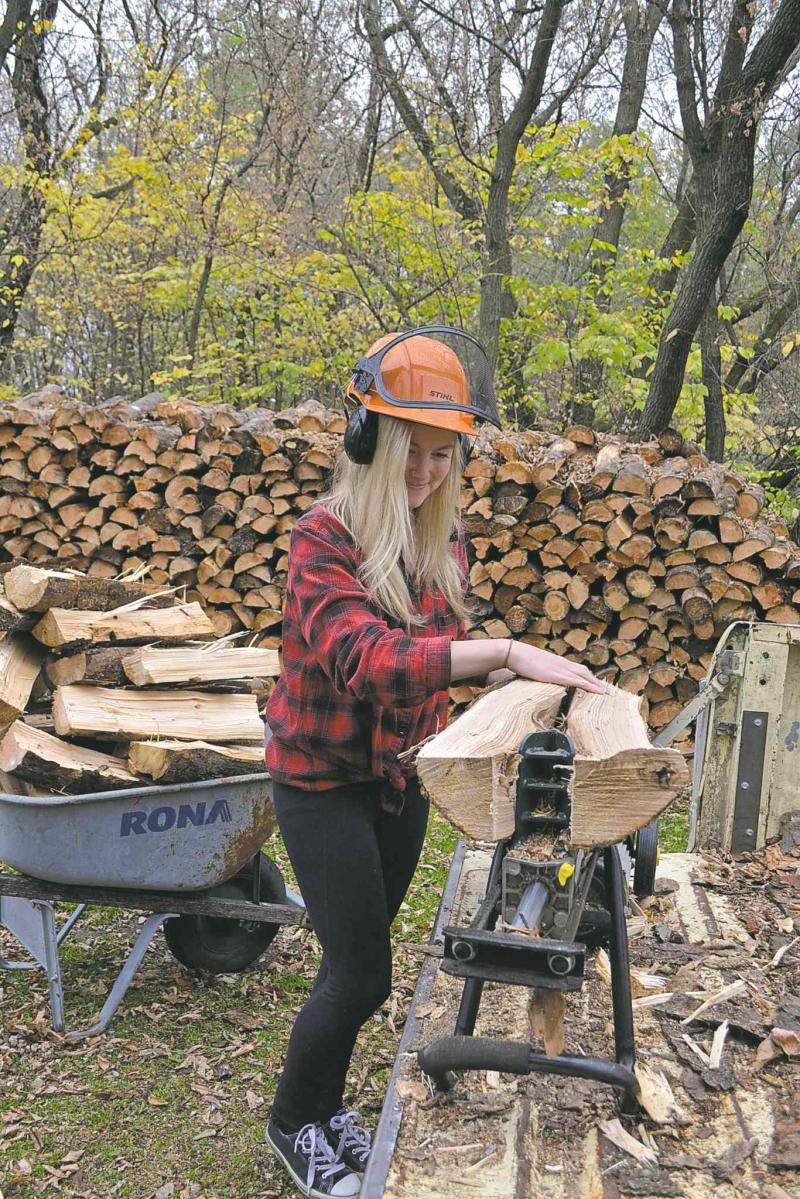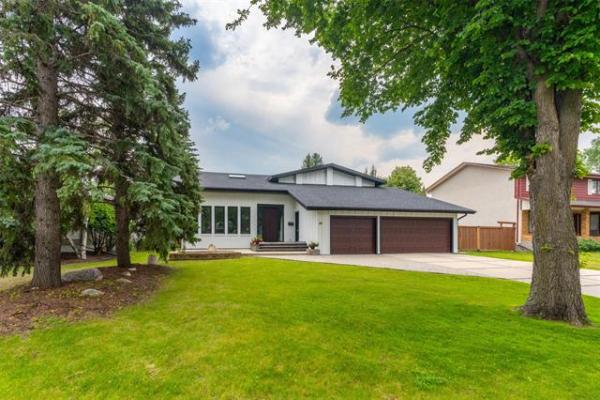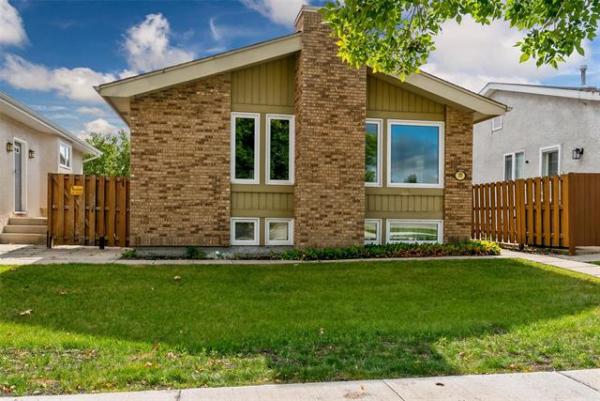
Many of today's home renovations include a high-efficiency wood-burning fireplace or stove.
One of the most common questions asked by owners of these new appliances is "What's the best wood to burn?"
The short answer is seasoned wood containing 15 per cent moisture or less.
Properly seasoned wood is cut and split in the early spring and allowed to dry from approximately May through September, though some people claim two or more drying seasons are required.
After multiple drying seasons, fuel wood will have a moisture content of about eight to 10 per cent, similar to that of hardwoods used to build fine cabinetry.
Whether it is worth seasoning wood for a few extra years to squeeze the maximum number of BTUs from a cord is debatable, the main considerations being the amount of storage room available and the deterioration of the wood after a few years.
Ideally, a woodpile should be stacked in an open area facing south and covered with a structure that allows the end grain to breathe and release moisture. (Wood wrapped tightly with a tarp will not dry because moisture will remain trapped inside the cells.)
Deciduous or hardwood trees produce the most BTUs because they are denser than softwoods or conifers.
As a person who has heated his house mainly with wood for 38-plus years, my picks for the best hardwood fuels available in Manitoba are bur oak, paper birch and black or green ash.
An interesting aspect of ash is it can be burned in a pinch when freshly cut because it contains the lowest natural moisture content (about 30 per cent) of the hardwoods.
The con to burning unseasoned ash is a large percentage of the wood's dry BTU rating is lost because the fire's heat must drive off the excessive moisture during combustion -- burning wet wood also creates creosote, that nasty oily fluid responsible for the majority of chimney fires.
Though Manitoba maple or box-elder is a true member of the acer or sugar maple family -- a coveted firewood in Eastern Canada where it grows -- in my experience our homegrown box-elder is a poor fuel wood that burns slowly, producing a lot of smoke and ash but not much heat.
On the pro side, I hate to completely diss this provincial icon; box-elder makes a lovely shade tree, is found throughout many parts of the province and can be tapped in the spring to create maple sugar.
Trembling aspen or white poplar is a good source of fuel for people who want to enjoy a few mesmerizing hours in front of an open fireplace or glass-enclosed wood burner.
Aspen grows prolifically throughout the province's forested area and is generally one of the least expensive wood fuels.
Though aspen has a low BTU rating, it splits easily and burns cleanly, producing a moderate amount of ash.
Balsam or black poplar, on the other hand, is a useless source of fuel, akin to box-elder in that it burns slowly, but it also creates dense black smoke and, even when perfectly dry, tends to generate a lot of creosote, perhaps because of the resin content of its sap.
As for softwoods, I think most people who heat with wood in Manitoba will agree tamarack is far and away the best in its class.
Also known as larch, this unusual conifer, which loses its needles in winter, has a BTU rating exceeding that of green ash, black ash or paper birch, even though larch has a similar density of about 38 pounds per cubic foot.
When my wife and I moved from the city to the country and began to heat with wood, neighbours told us tamarack was our best choice of fuel.
As it wasn't even mentioned in my bible, The Woodburners Handbook (published in America), I foolishly ignored their advice, burning hardwoods instead.
When these became excessively expensive during the oil-shortage scare of the 1970s when everyone seemed to purchase a wood stove, I switched to tamarack because it was cheaper.
To my surprise and delight, the wood was an excellent fuel, producing a hot fire, very little ash and, in the morning, coals remained in the stove that could be used to rekindle a fresh fire.
My only disappointment was I was too thick-headed to listen to my neighbours' advice in the first place.
Nowadays, the price of tamarack is nearly equal to that of hardwoods, and the availability is variable depending on winter weather: The trees grow in swamps and are harvested when the ice is thick enough to support men and machinery.
Last winter, we had so much snow the swamps had begun to thaw before harvesting began, limiting the number of trees that could be cut.
As a result, tamarack was sold out this spring before I could place an order, and I had to settle for 10 cords of jack pine, a curious evergreen with seed pods that will not open until the temperature reaches 50 C, usually during a fire.
As a fuel wood, jack pine has a mediocre rating because of its low density (about 30 pounds per cubic foot) and its fast burn rate, creating a lot of immediate heat that dissipates quickly as the wood is consumed.
It can be difficult to split because of it interlocking grain; however, it grows prolifically in most areas of the province and has limited commercial use so it is readily available at a reasonable price.
Other conifers that grow in Manitoba include eastern white and red pine, as well as black and white spruce and eastern white cedar.
These species are not commonly burned for fuel as they are either rare or of commercial value, and all have a low BTU rating.
Balsam fir is a common tree in Manitoba that produces a sticky, volatile sap. The wood is extremely soft and therefore has limited use as a fuel source, though it can be used as a fire starter because of the sap content.
Be aware burning balsam fir creates a lot of ash and, because of the sap, the initial high temperature of the fire can damage wood heating appliances.
On a final note, be cautious about purchasing wood-burning devices that are equipped with catalytic converters, as they can be damaged by something as basic as ink from newspaper used to start a fire.
davidsquare81@yahoo.com



